The UK's most historic sites you won't believe you can stay in
Historic hideaways
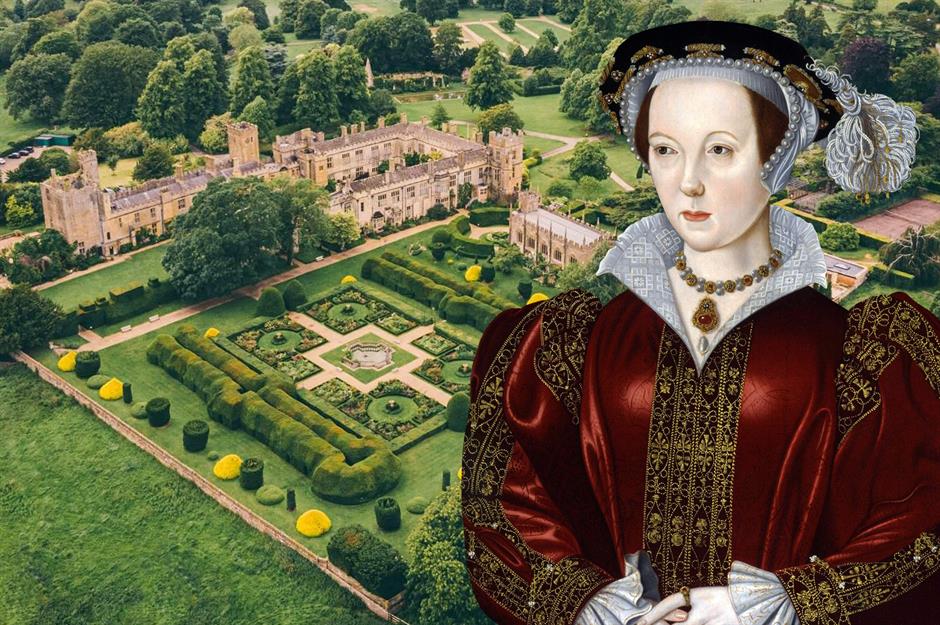
Britain has a long and illustrious history which has resulted in a wonderfully eclectic mix of architectural styles. From royal palaces and Gothic cathedrals to ancient castles and country estates, many historic buildings have been rescued, restored and transformed into holiday retreats.
Click through this gallery to see some of the most incredible historic holiday homes from across the UK...
Appleton Water Tower, Norfolk, England
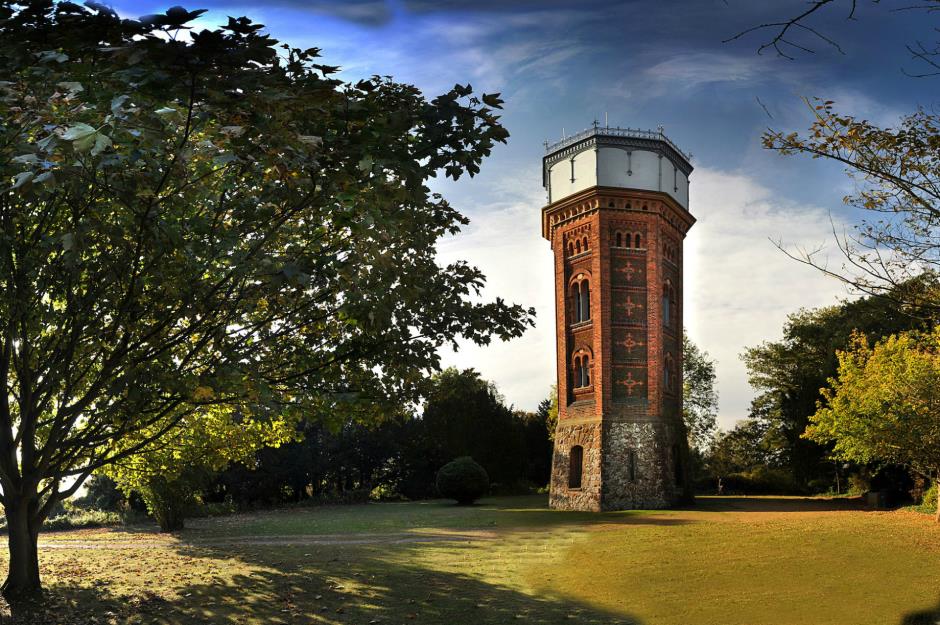
Sitting on the edge of the Sandringham Estate in Norfolk, Appleton Water Tower dates back over 150 years. Completed in 1877, the Victorian tower was built to provide a clean and reliable water supply after Edward, Prince of Wales and his eldest son fell ill with typhoid while staying on the royal estate. Designed by engineer James Mansergh, a 32,000-gallon cast-iron water tank tops the tower and ensured that the water had the right pressure.
Appleton Water Tower, Norfolk, England
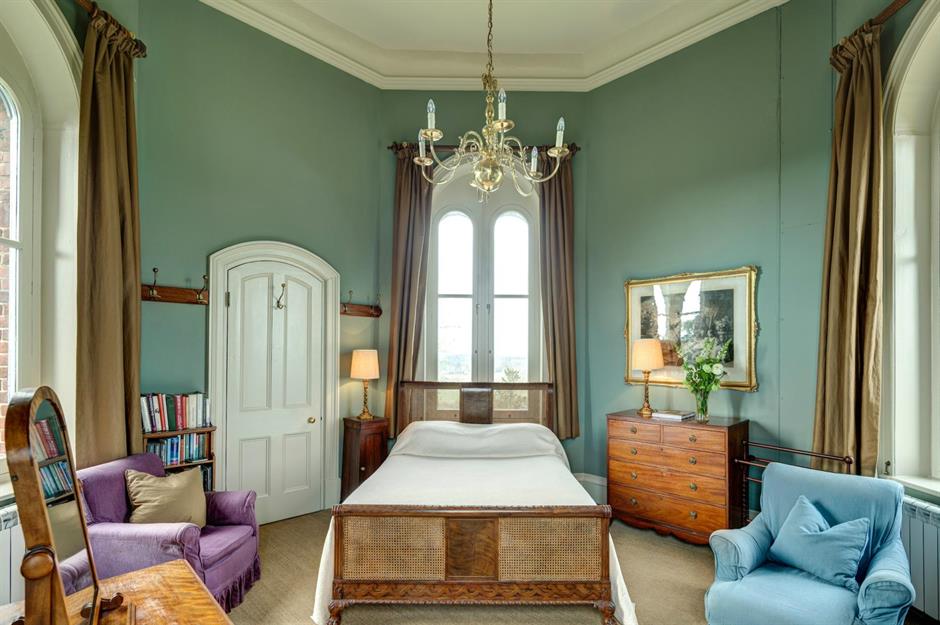
Considered a masterpiece of architecture, the tower has been transformed into a peaceful holiday retreat. Spread over four levels, the elegant and functional red brick structure features two bedrooms, a kitchen and a terrace, as well as plenty of living space for up to four people. The tower also has a viewing platform which provides 360-degree views across Norfolk’s beautiful rural landscape and its own enclosed garden.
Love this? Follow our Facebook page for more travel inspiration
Cliveden House, Berkshire, England
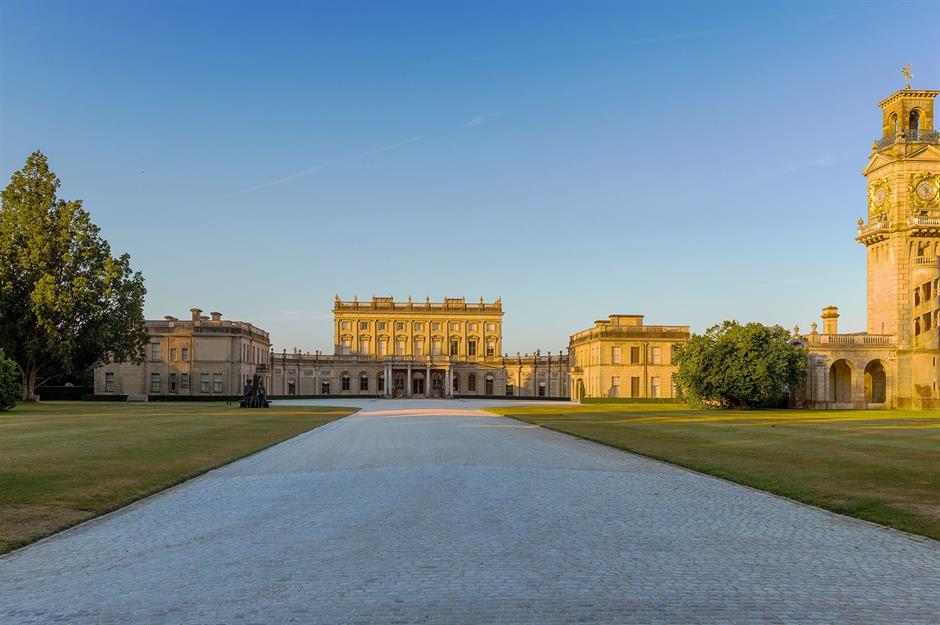
Standing majestically upon its namesake chalk cliffs, Cliveden House in Berkshire was originally built in the 1660s by George Villiers, the 2nd Duke of Buckingham. It’s thought that the Duke built Cliveden for his mistress, the Countess of Shrewsbury, and after hearing of the affair her husband the Earl challenged Buckingham to a duel in 1668 and was fatally injured. The house has since had various prominent owners, such as the 1st Earl of Orkney and Frederick, Prince of Wales.
Cliveden House, Berkshire, England
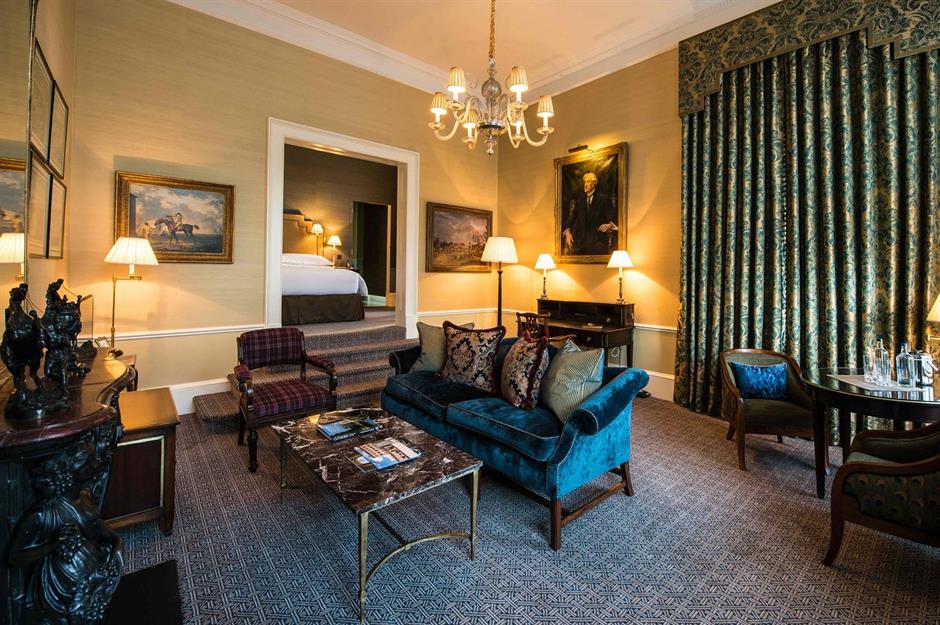
After surviving war and scandal – most notably the infamous affair between politician John Profumo and model Christine Keeler during the 1960s – Cliveden House became a luxury hotel in 1985. The current house owes its lavish architecture to Sir Charles Barry, who also designed London’s Palace of Westminster. With its opulent rooms, luxury spa and picturesque gardens nestled within 376 acres of National Trust parkland, Cliveden House is a magnificent sight.
Kilmartin Castle, Argyll, Scotland
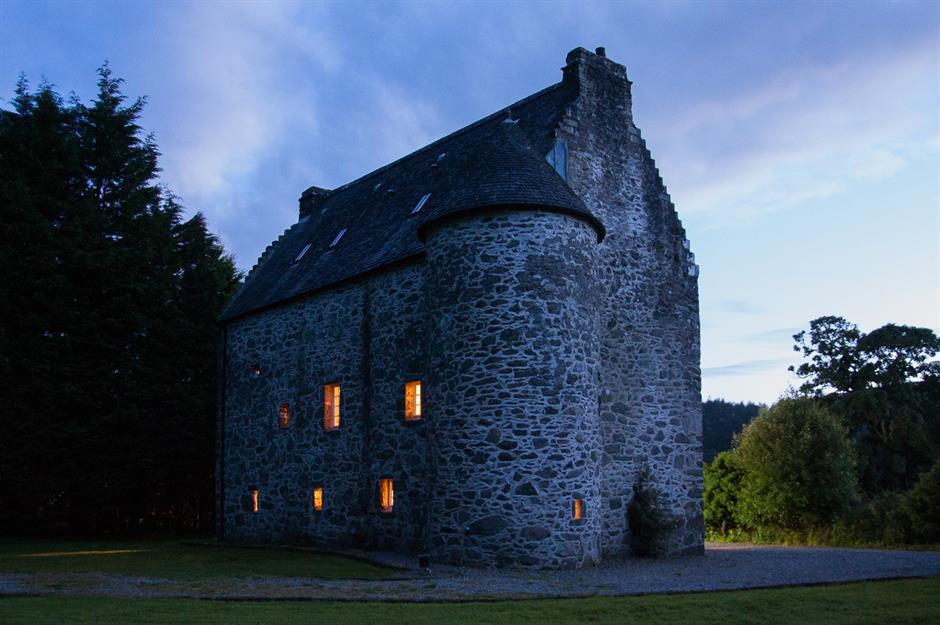
In the heart of the ancient Kilmartin Glen, this charming Scottish castle can be traced back as far as the 16th century. Completed in 1550, Kilmartin Castle was built by John Carswell, Rector of Kilmartin Glen and later the Bishop of the Isles. The castle was then held by the Campbell Clan for 200 years, known as one of the largest and most powerful clans of the Highlands until the castle was later abandoned.
Kilmartin Castle, Argyll, Scotland
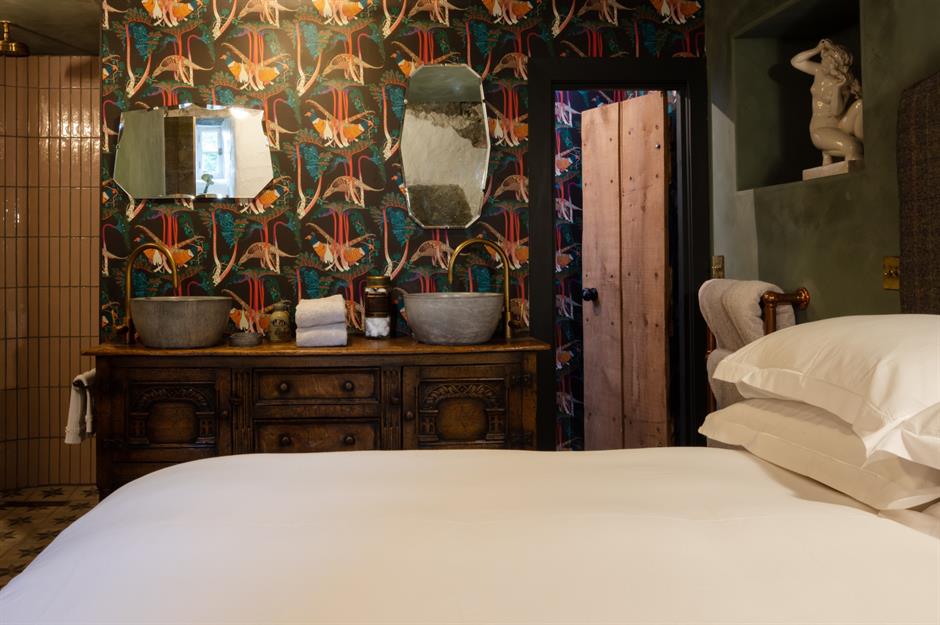
It wasn’t until 2019 after an extensive restoration that Kilmartin Castle opened its doors as a luxury B&B. Today, there are five elegantly decorated ensuite bedrooms, each individually themed with antique furniture and a mix of modern and original artwork.
Apartment features include an original stone barrel-vaulted ceiling in the Snug room and exposed stonework like the dining room downstairs. With its historic décor and magical location, the castle is like a doorway into the past.
St James' Church, Kent, England
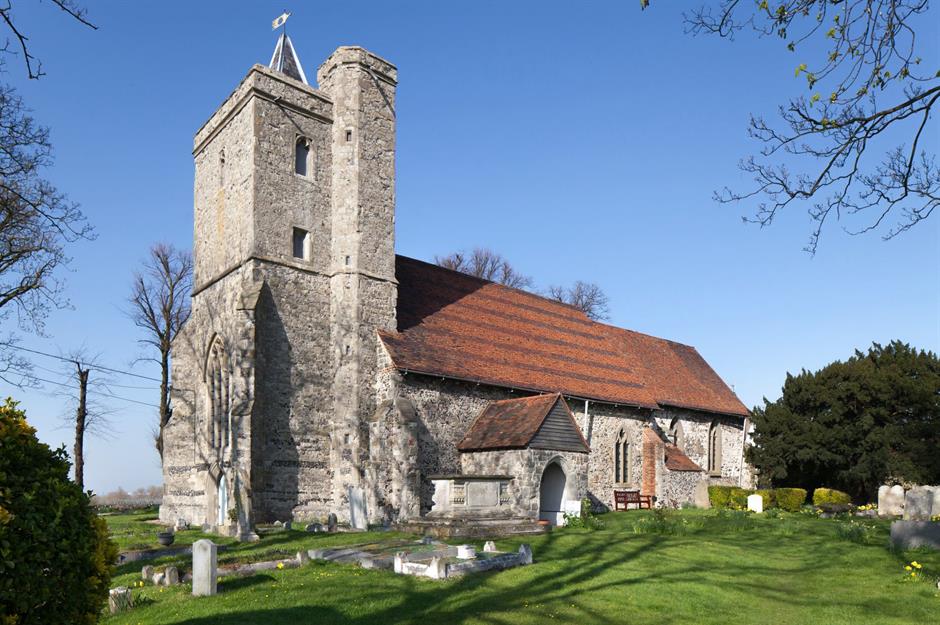
This Anglican church in Kent may look ordinary but it has links with one of the most famous English novelists in history, Charles Dickens. The churchyard of St James’ inspired the opening to his famous Victorian novel Great Expectations, when Pip meets Magwitch the convict. Dickens also references a group of small lozenge-shaped graves that can be found at the church, and the graves are often called 'Pip’s Graves' by fans of the author.
St James' Church, Kent, England
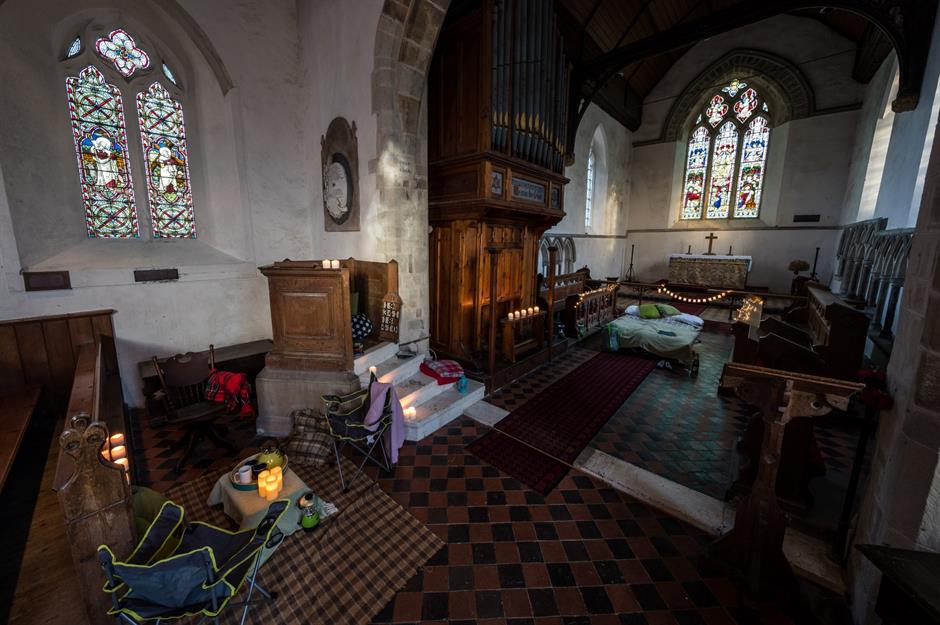
The church itself dates to the late 13th century, built with a Kentish mixture of ragstone, flint and various other stones. Its beautiful tower is thought to be the final part added to the church before it was completed at the end of the 14th century.
Inside, the building is light and spacious, featuring a 500-year-old timber door and a 19th-century vestry lined with thousands of cockle shells (the emblem of St James). The church, now looked after by the Churches Conservation Trust, can be rented out for a unique camping experience, known as 'champing'.
Scone Palace, Perth, Scotland
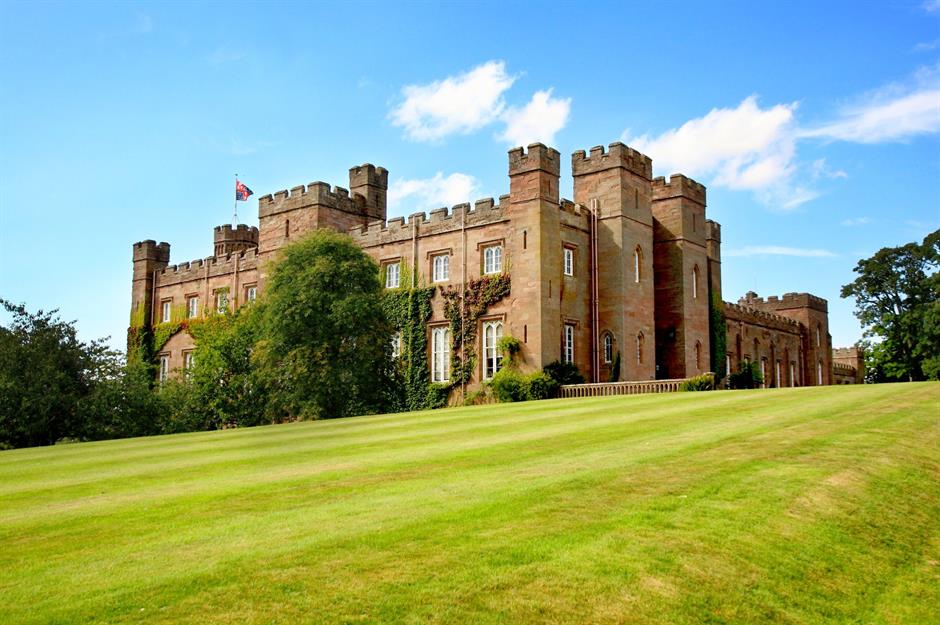
Surrounded by beautiful gardens and peaceful woodland, the magnificent Scone Palace is one of Scotland’s most important stately homes. Scone is best known for housing the famous Stone of Scone, also known as the Stone of Destiny.
According to legend, Kenneth MacAlpin created the Kingdom of Scone in the 9th century and established himself as the first true King of Scots. All the Scottish royals that followed were crowned on Moot Hill, seated upon the Stone of Scone, until the last coronation of Charles II in 1651.
Scone Palace, Perth, Scotland
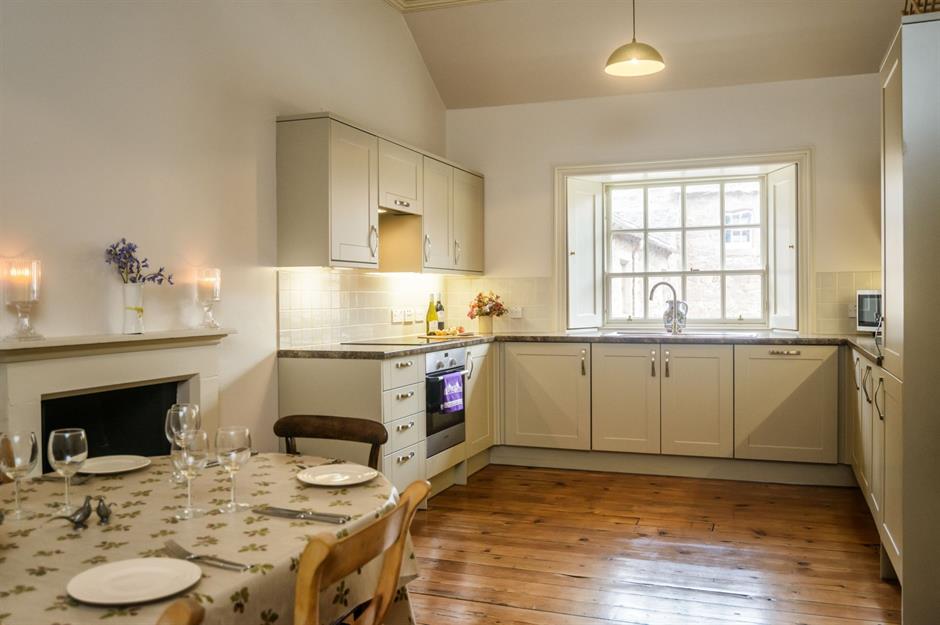
Today, a replica of the Stone of Scone can be found on Moot Hill, symbolising the original site. Dating to the 19th century, with its opulent interiors, fine French and Italian furniture and spectacular artwork, the current palace is just as impressive and is owned by the Murray family.
Its Balvaird Wing has been turned into three luxury ensuite bedrooms for up to six guests. The Murray Star Maze is another highlight, designed by Adrian Fisher. Its five-pointed star shape features in the Murray family’s crest and is one of Scone’s best attractions.
Wolterton Park, Norfolk, England
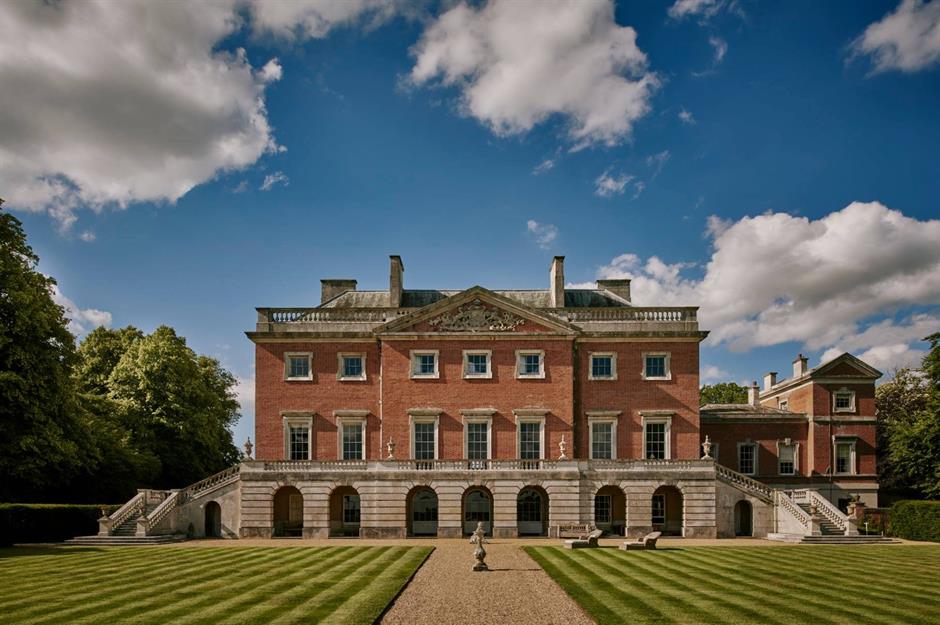
This grand 18th-century manor in Norfolk was built by Horatio Walpole, the brother of Sir Robert who was Britain's first prime minister. In 1727, Walpole enlisted architect Thomas Ripley to build him a lavish home which took a staggering 15 years to complete. Despite periods where it remained unoccupied, the house was passed down by the Walpole family until 2016 when it was bought by Peter Sheppard and Keith Day, who have since restored many of the estate buildings and the gardens.
Wolterton Park, Norfolk, England
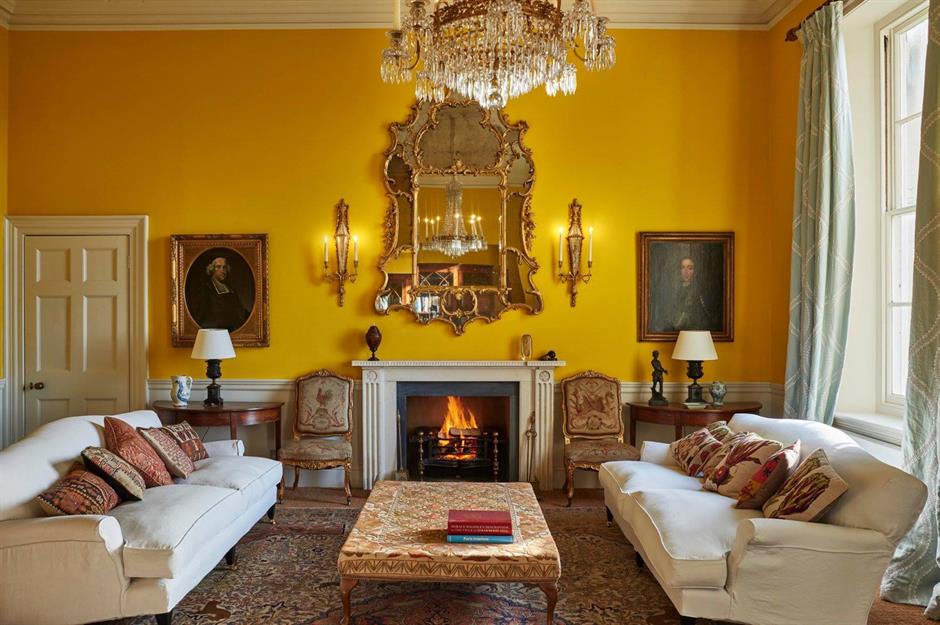
With its 500 acres of picturesque fields and woodland including a magnificent 10-acre lake, Wolterton has become a breathtaking country hotel. Inspired by Italian Renaissance architect Andrea Palladio, its array of gorgeous rooms are typically Palladian, with original marble fireplaces, 18th-century artwork and huge windows. Within Wolverton’s Regency wing there are 11 ensuite bedrooms, as well as six other accommodations on the grounds where guests can stay.
Roch Castle, Pembrokeshire, Wales
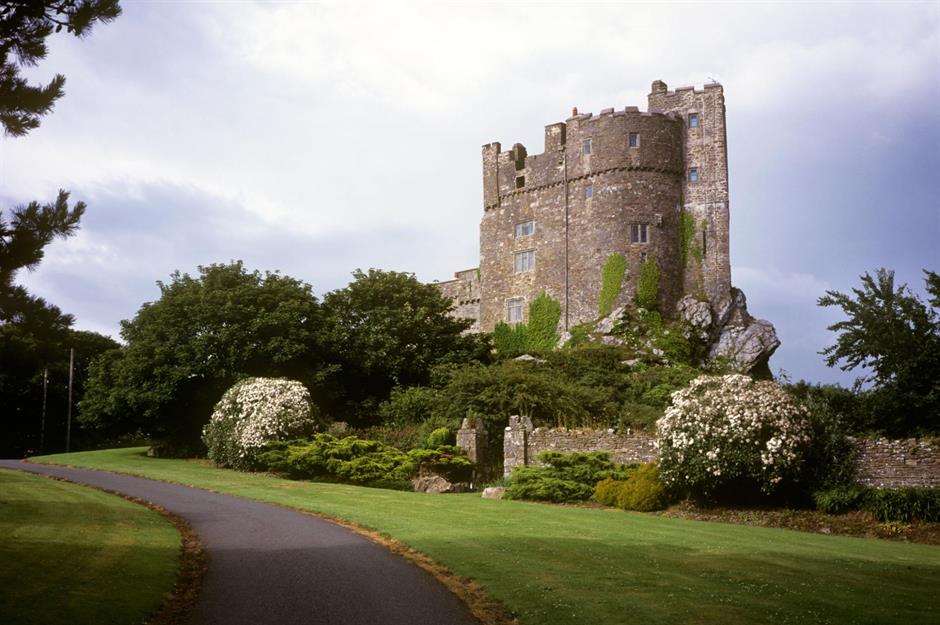
First built in the late 12th century, Roch Castle certainly has the 'wow' factor. Perched on a rocky outcrop, it offers impressive panoramic views across the Pembrokeshire countryside.
The castle’s original ownership by the de Rupe (or de la Roche) family ended in 1420, after which it changed hands numerous times. It fell into disrepair after the English Civil War ended in 1651, but extensive restoration work began in 1900 under Viscount St David.
Roch Castle, Pembrokeshire, Wales
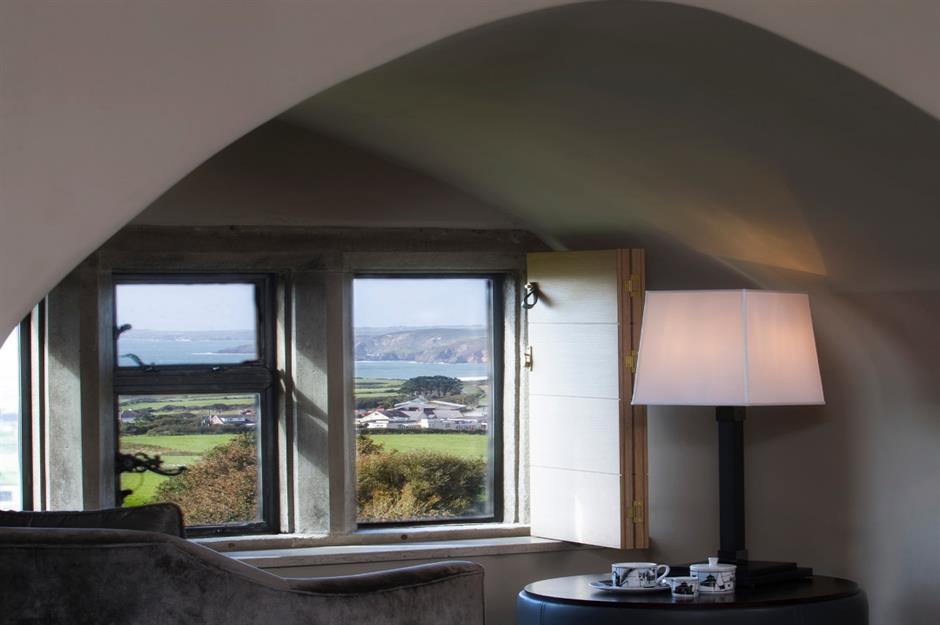
The castle opened in 2013 as a luxury hotel and boasts six well-appointed rooms, one of which, the Adam de Rupe, is named for the first known inhabitant of the castle. His desire to live high up on the rocks was said to derive from a prophecy that he would die from a viper bite – which is, supposedly, how he did die when one snuck in in a bundle of firewood. Nowadays, guests can look forward to comfortable accommodation and fantastic views.
The Control Tower, Norfolk, England
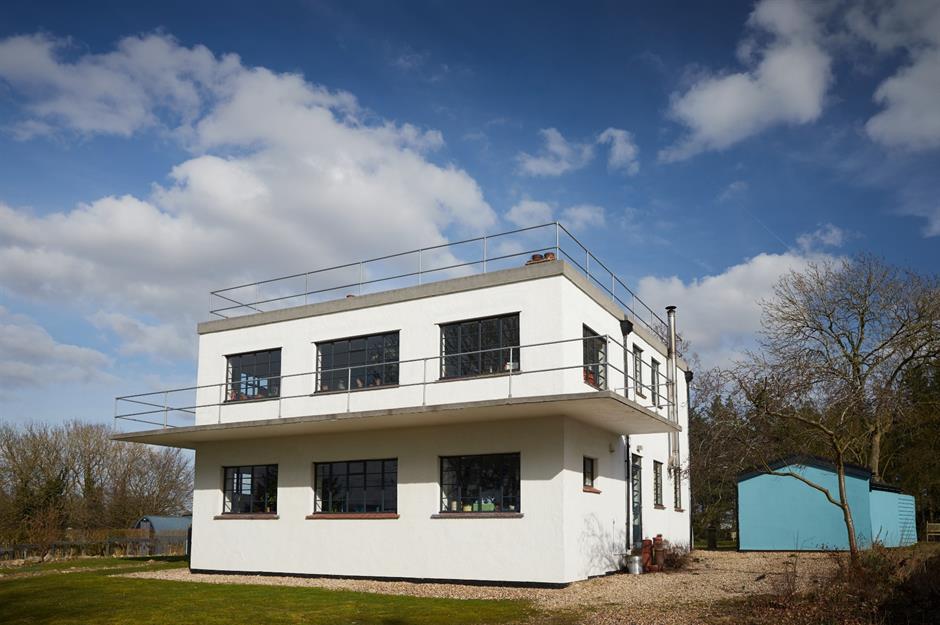
Tucked away in the tranquil countryside of Norfolk, this tower forms part of the remains of a secret bomber base from World War II. Built in 1943 on the former RAF North Creake Airfield, the tower controlled all 199 and 171 Squadron take-offs and landings.
The squadrons were part of The 100 Group of Bomber Command and their mission was to carry out secret D-Day radio countermeasures. After the airfield closed, the tower went from monitoring take-offs to becoming flats and offices up until 2014 when it was converted into a B&B.
The Control Tower, Norfolk, England
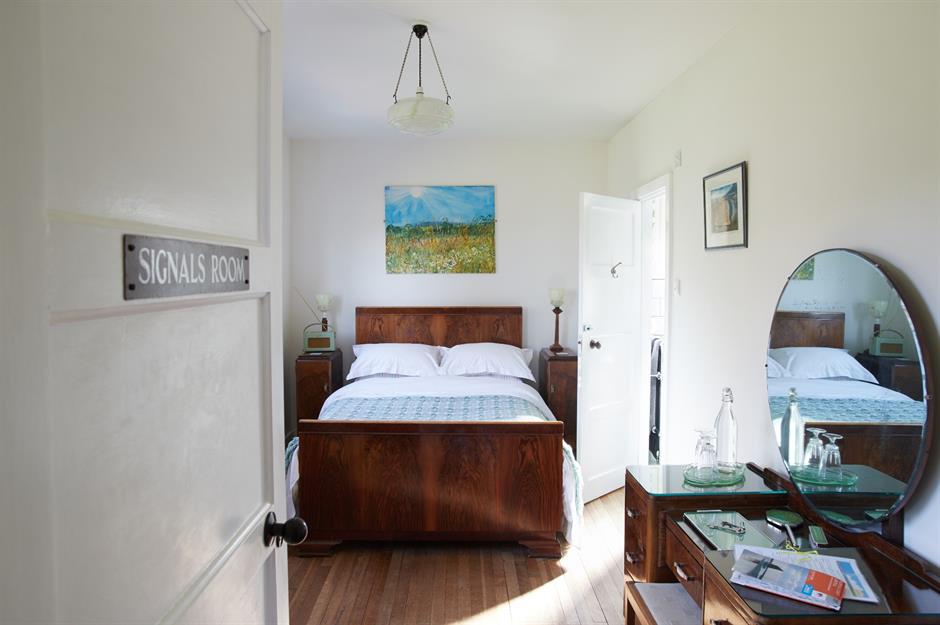
The unique building features three double ensuite bedrooms and a garden suite outside, and each room pays homage to the tower’s origins, with the Signal room, Board room, Controller’s Rest room and Stirling Suite. The interior is dotted with quirky period features including an Art-Deco fireplace and a vintage bathtub. Situated near the coast, there are plenty of peaceful beaches nearby including Wells-next-the-Sea, Burnham Overy Staithe and Stiffkey.
The Georgian House at Hampton Court Palace, Surrey, England
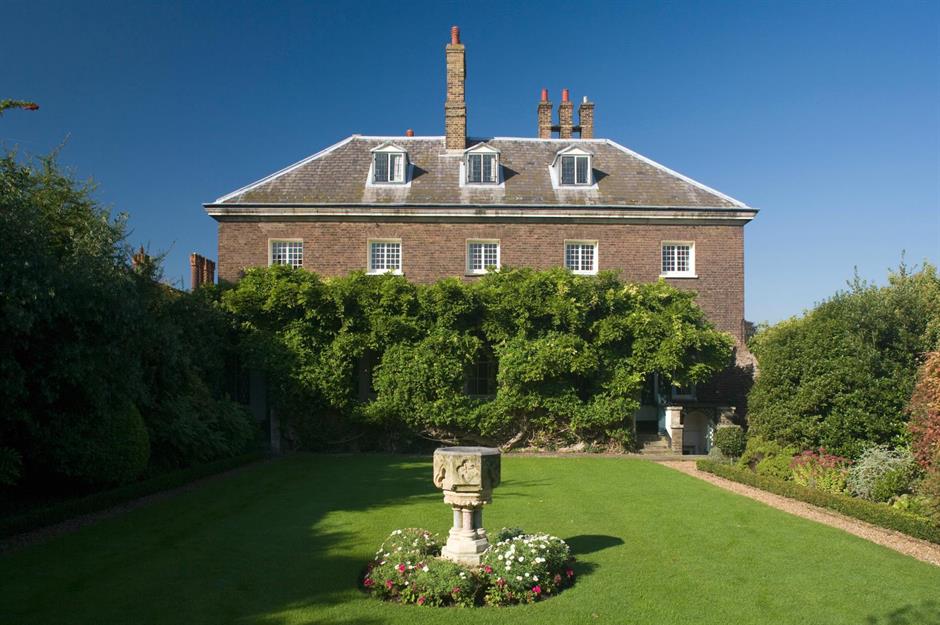
Situated in west London is the wonderful Hampton Court Palace, the former Tudor royal residence and pleasure playground of King Henry VIII. Although Hampton Court was originally built during the 16th century for Cardinal Wolsey, The Georgian House was a later addition to the palace grounds, built over 200 years later in 1719 to house the palace kitchens. The eastern building has since been converted by the Landmark Trust into an elegant holiday home.
The Georgian House at Hampton Court Palace, Surrey, England
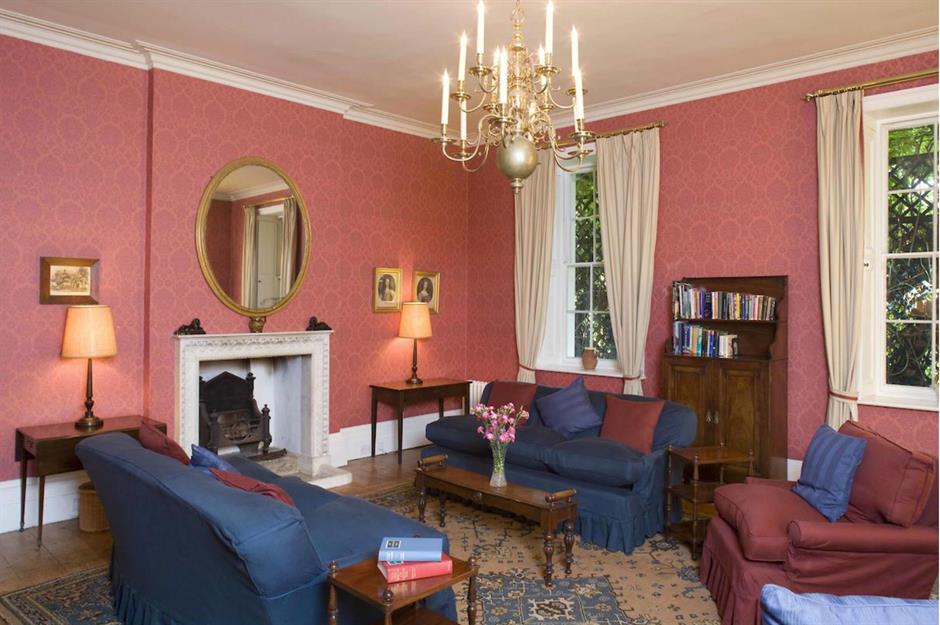
The building retains many of its original features, including the old cooking hearth which has now been blocked off, giving it a traditional feel. Spread over three floors, the house has five bedrooms for up to eight guests and has been furnished in a classic English style.
The attic rooms provide a beautiful view of the palace nearby. Those who stay here can explore Hampton’s 60 acres of gorgeously landscaped grounds including Henry VIII’s Real Tennis Court and the UK’s oldest surviving hedge maze, built for King William III in the late 17th century.
St Andrew’s Church, Shropshire, England
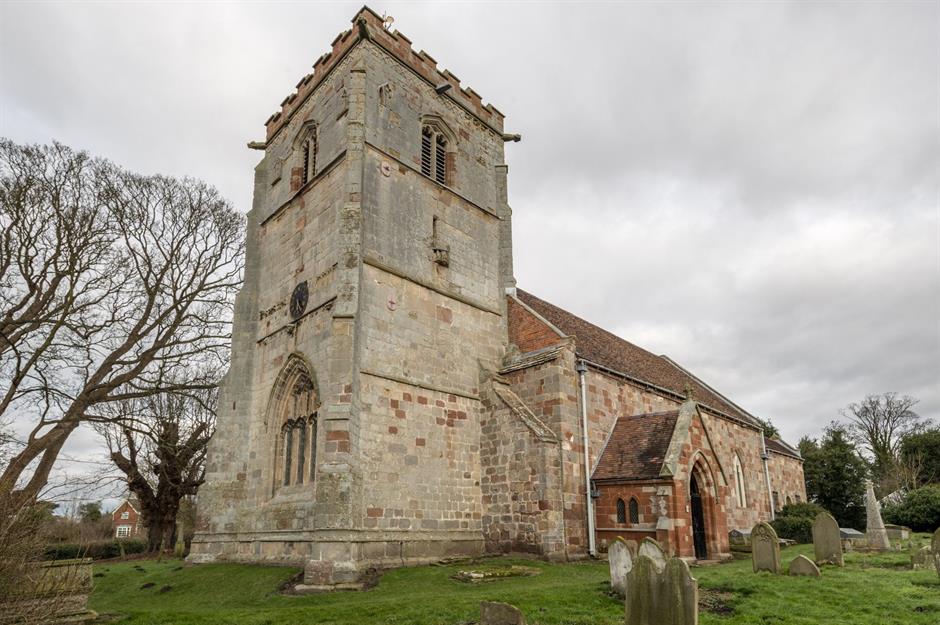
Built on the Roman site of Viroconium, the fourth largest town of Roman Britain, this Saxon church in Shropshire is an archaeological treasure thought to date back thousands of years. Although the early history of the church is unclear, a church with four priests is mentioned on the site in the 1086 Domesday Book. Parts of the structure and churchyard date back as far as the ancient Romans with various features added and altered up until the 19th century.
St Andrew’s Church, Shropshire, England
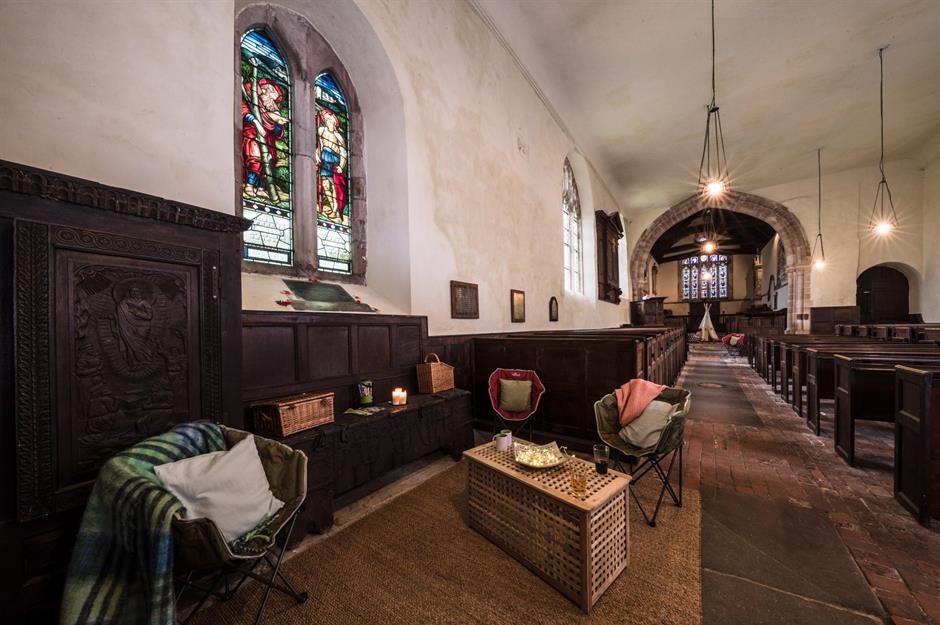
With the decline of the town after the Romans left Britain in the 5th century, the ruined buildings became a quarry for stone. Roman masonry was later incorporated into the church and can be seen in its walls. The huge font used part of a Roman column.
With its ancient roots and close proximity to the Wroxeter Roman City, the incredible church became an excavation site before it was passed on to the Churches Conservation Trust in 1987. St Andrew’s is now used as a camping (or 'champing') site for up to eight people.
Sudeley Castle, Gloucestershire, England
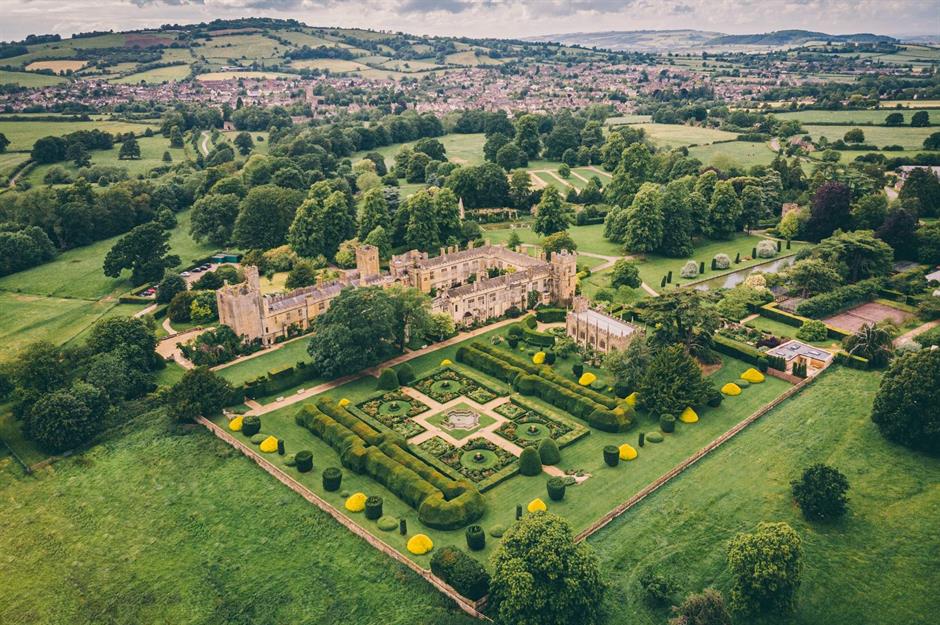
Looming over the spectacular Cotswolds Hills in Gloucestershire, this mighty castle has royal connections spanning many centuries. Sudeley remains the only private castle in England to have a queen buried within its grounds – Queen Katherine Parr, who was the sixth and final wife of King Henry VIII.
King Charles I also found refuge here during the Civil War after his nephew Prince Rupert established headquarters at the castle. After it was 'slighted' by Oliver Cromwell at the end of the war, Sudeley was left derelict for nearly 200 years.
Sudeley Castle, Gloucestershire, England
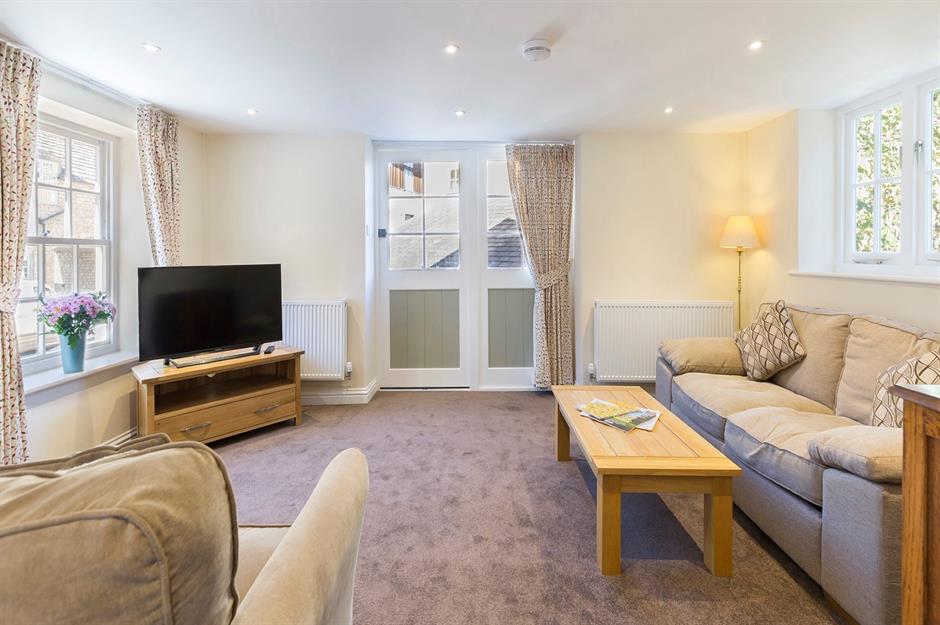
Sudeley Castle is currently the home of Elizabeth, Lady Ashcombe and her family, and is one of the most popular tourist attractions in the Cotswolds. Inside, the castle is home to an array of incredible treasures spanning everything from the ancient Romans to the present day; its rare textile collection is a real highlight. Within the castle grounds there are 17 holiday cottages, each with their own charm, most of which were restored from existing properties on the estate.
LV14 SULA Lightship, Gloucestershire, England
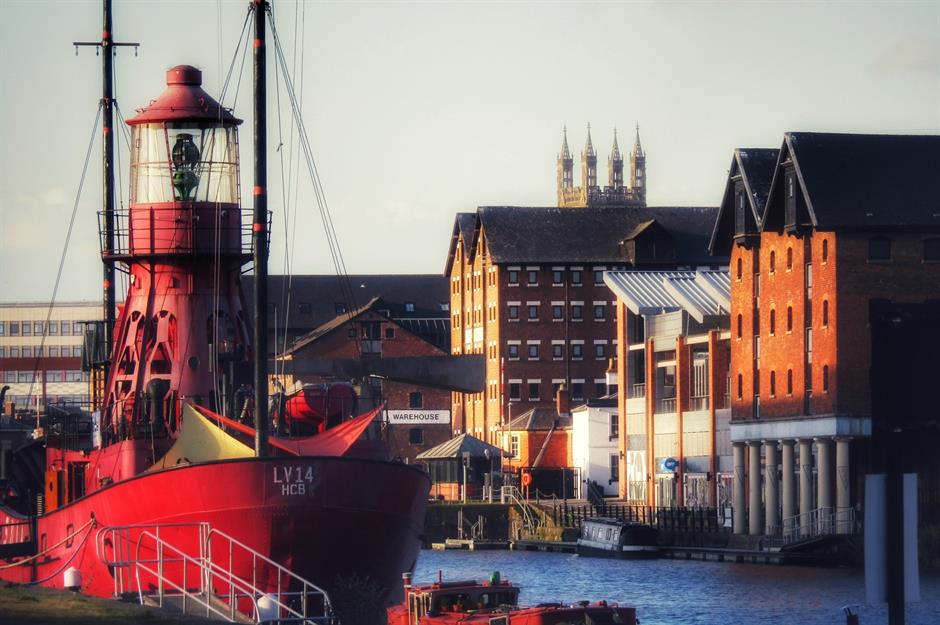
Known as the only lightship in the UK to offer accommodation, this unique vessel can be found moored at the Gloucester Docks in the west of England. Commissioned by the Humber Conservancy Board in 1959, the lightship (which was originally called SPURN) was stationed on the Humber Estuary to help protect mariners for 26 years until it was decommissioned in 1985. Since then, SULA has become a defining landmark of the docks.
LV14 SULA Lightship, Gloucestershire, England
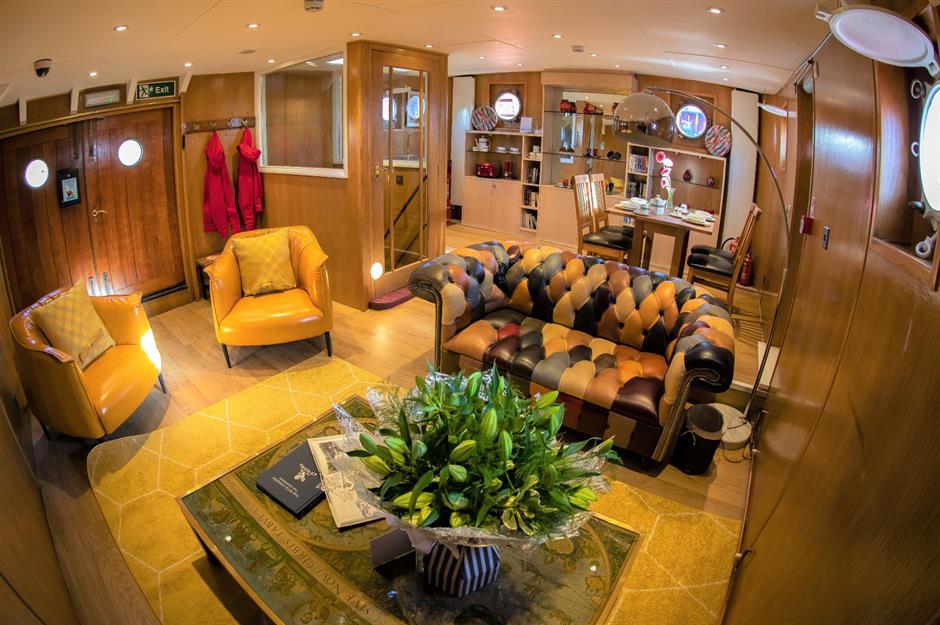
Following new ownership in 2020, the old lightship has been beautifully renovated into a holiday property. The cosy retreat consists of two bedrooms, one named after the year SULA went into service and the other after the year it retired.
The lightship has kept many of its original features including the portholes, teak doors and wooden ladder, while modern features have been added such as kitchen facilities and a furnished lounge. The external sun deck offers views overlooking the docks and Llanthony Secunda Priory.
Aynhoe Park, Northamptonshire, England
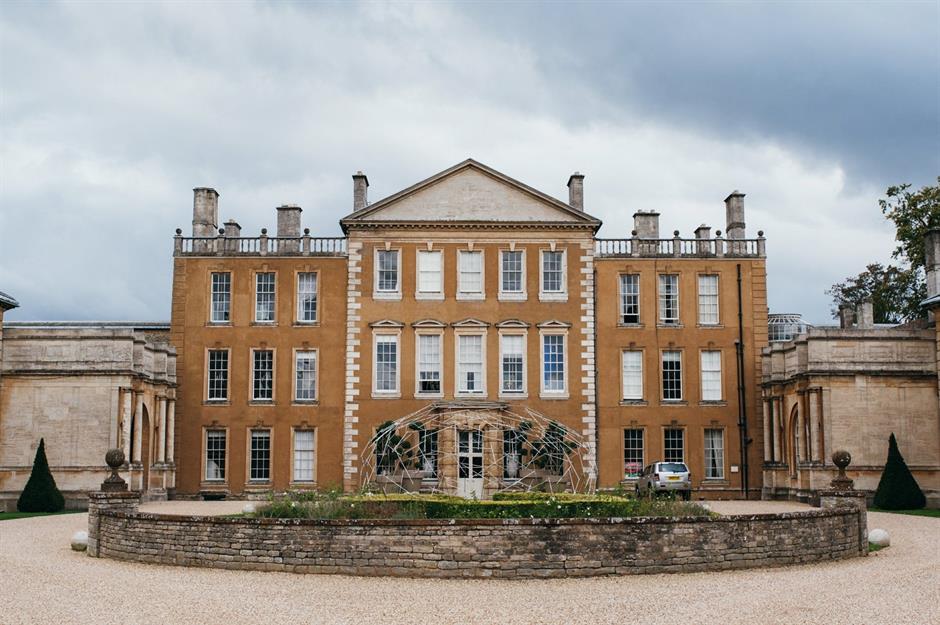
Located on the southern edge of the tiny village of Aynho, this stately home in the East Midlands has a long and turbulent history. John Cartwright bought the original house in 1615 but it was sadly destroyed during the Civil War.
The Jacobean manor was rebuilt, remodelled and embellished across centuries by multiple owners. Following the end of the Country Houses Association in 2004 which had converted the house into flats, James Perkins bought Aynhoe Park in 2006 and has been restoring and renovating it ever since.
Aynhoe Park, Northamptonshire, England
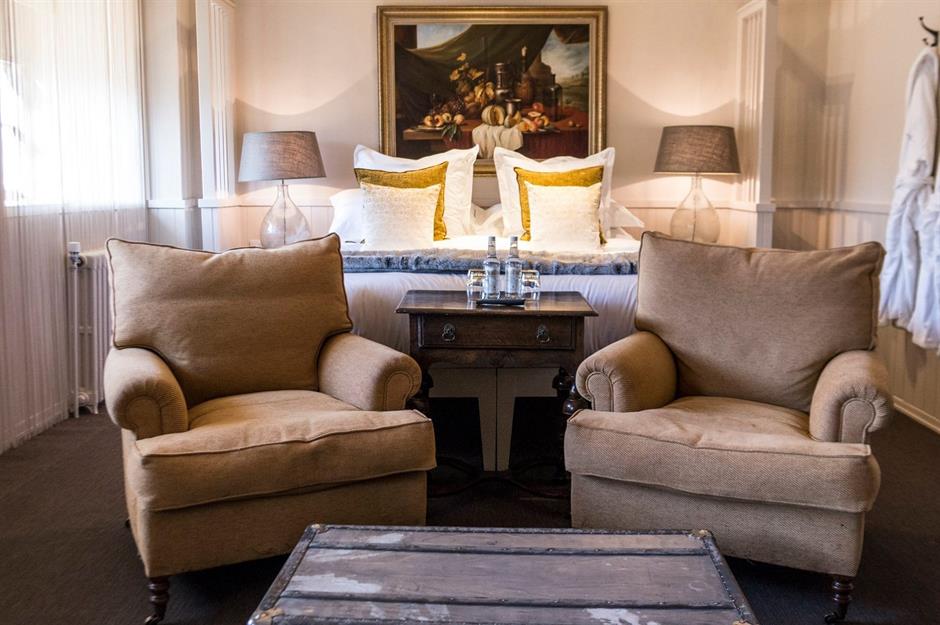
Available exclusively for private hire, the house has 28 bedrooms, each elegantly decorated with both classic and contemporary artwork and furnishings. The rest of Aynhoe is equally as impressive, with its lavish dining room, historic library and a Hollywood Regency-style salon. Originally planned by 17th-century gardener Lancelot 'Capability' Brown, the gorgeous grounds are another draw, featuring walled gardens, an orchard and lawns dotted with sculptures.
Cowdray House, West Sussex, England
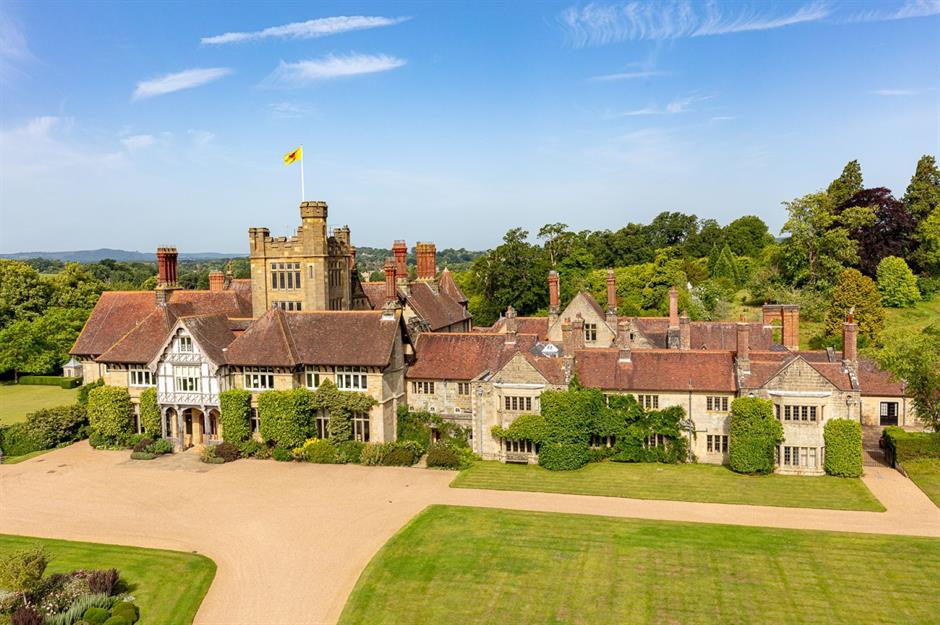
Situated within the heart of the South Downs National Park, the Cowdray Estate sits among the rolling hills of West Sussex. The estate is home to the old Cowdray House, one of the most important early Tudor houses in England, with visitors including King Henry VIII and Queen Elizabeth I. In 1793, while undergoing repairs and renovations, a fire broke out and destroyed most of the building; its ruins, including the Kitchen Tower, can still be seen on the site.
Cowdray House, West Sussex, England
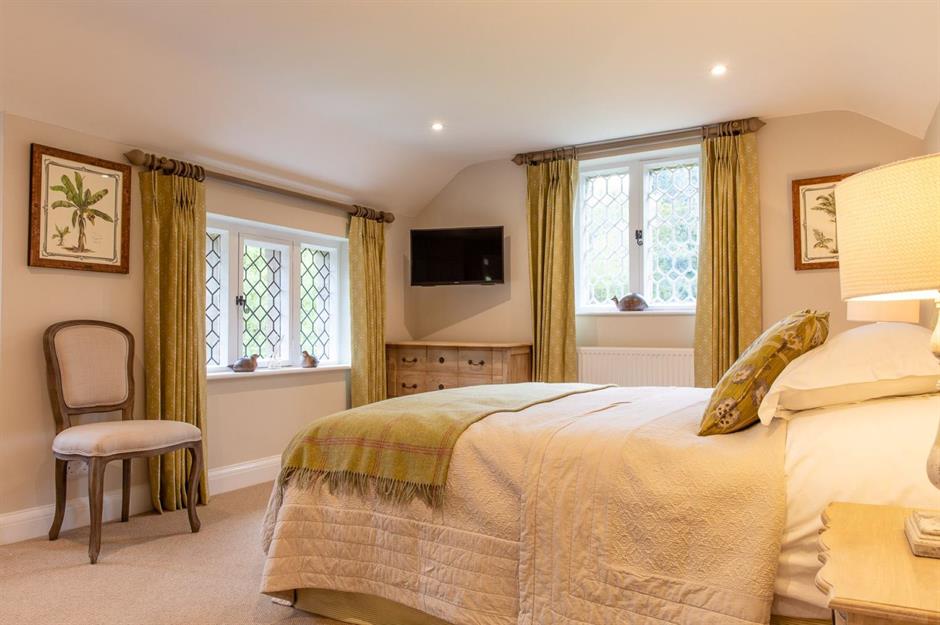
The estate is home to the restored Grade II-listed property as well as holiday cottages. Set within 110 acres of private gardens and landscaped grounds, the house oozes classic English charm. There is a choice of holiday accommodations on the estate, including charming cottages, an 18th-century lodge, a bothy and a second country house. There are even two treehouses nestled in the estate's peaceful woodland.
Kinnaird Castle, Angus, Scotland
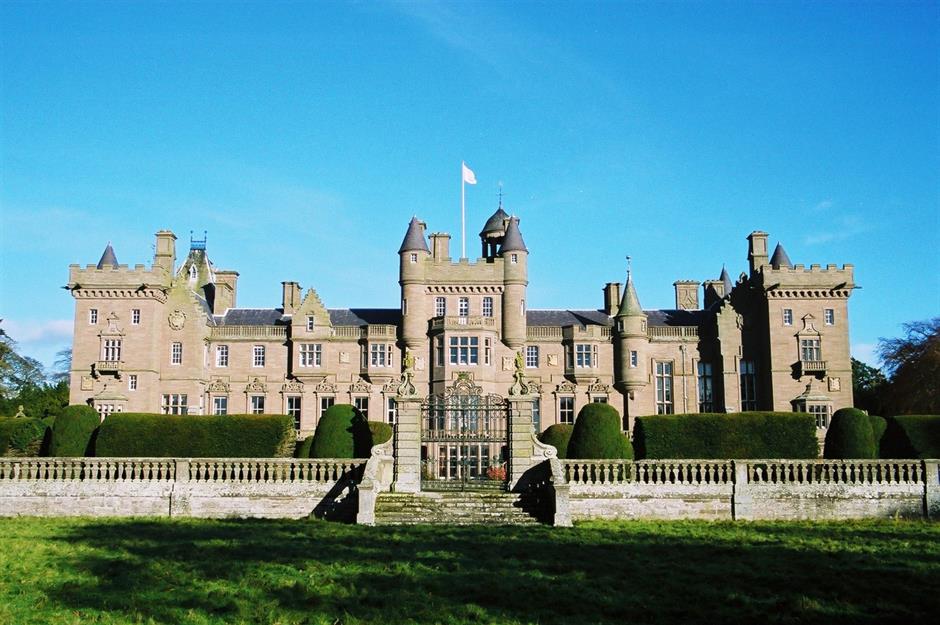
Lying between the Montrose Basin and Brechin in Scotland, Kinnaird Castle has been home to the Carnegie family since the 14th century. The castle’s best-known resident was James, Marquis of Montrose, a famous leader in the Civil War and husband to the daughter of the 1st Earl.
He lived here in the 17th century until he was betrayed, captured and killed in Edinburgh. In 1715, the 5th Earl made the mistake of supporting the Old Pretender – James Edward Stuart – against the crown, and the failed rebellion meant he ended up stripped of his title and lands.
Kinnaird Castle, Angus, Scotland
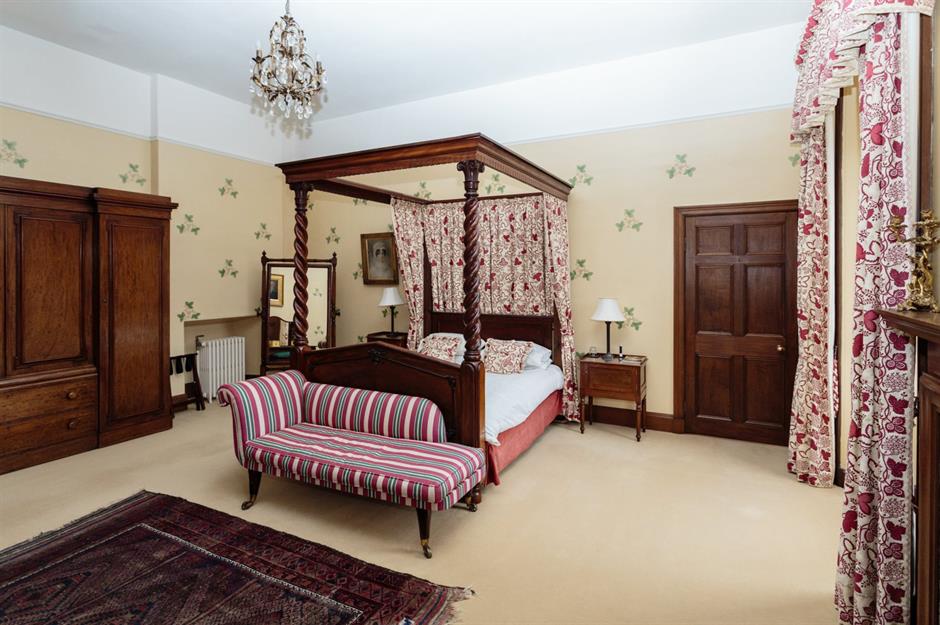
It wasn’t until 1855 that the family titles were regained and the 9th Earl hired David Bryce to remodel the house in a high Victorian Baronial style. Following a fire in 1921 that devastated the manor, the house was slowly rebuilt.
The first and second floors of Kinnaird have since been transformed into impressive luxury apartments, combining traditional charm and modern features. Covering some 7,000 acres, the estate is also home to some incredible wildlife. Woodpeckers, owls and red squirrels are just a few of the animals that live on the grounds.
Church of St Cuthbert, Herefordshire, England
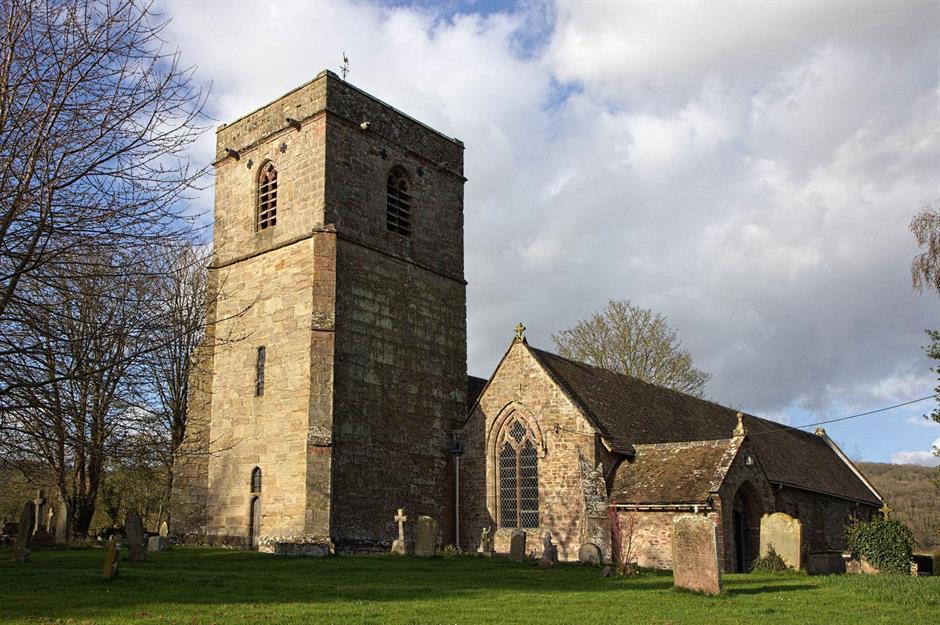
Perched on a bend in the River Wye stretching over the Herefordshire Hills, the Church of St Cuthbert in the village of Holme Lacy is a hidden gem of the West Midlands. Originally gifted to the monks of Gloucester by Hugh de Lacy in around 1115, the Scudamore family became patrons of the church from medieval times up until the 20th century.
Many of the family’s graves, treasures and monuments can be found dotted across the church including the magnificent tomb chest of Sir John Scudamore, dressed in armour, and his wife Sibell Vaughan of Hergest.
Church of St Cuthbert, Herefordshire, England
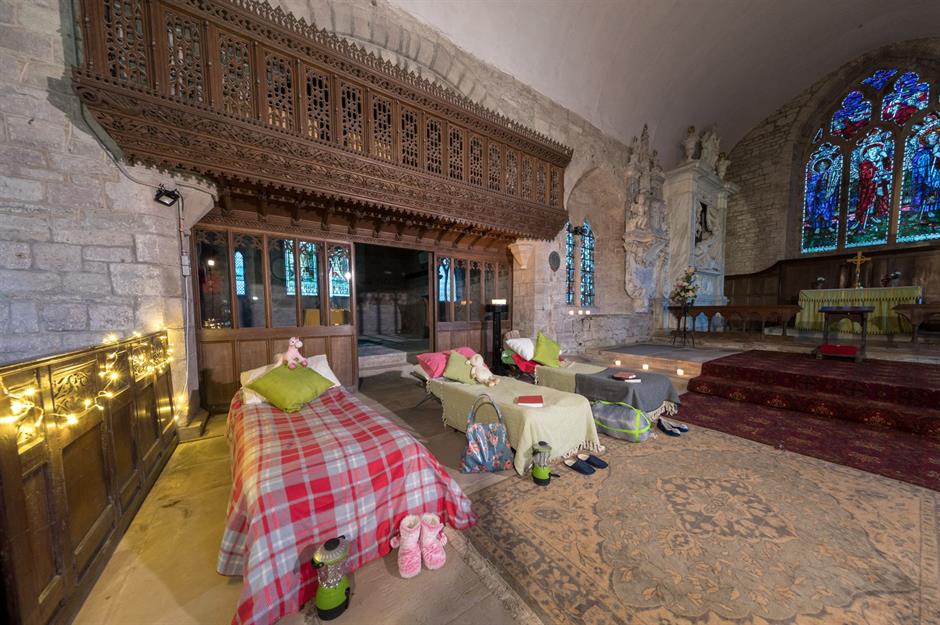
Built in sandstone, the church, which has been altered and expanded over time, is a beautiful mix of styles from the 13th century to the present day. Notable features include the large marble monument to James, son of the first Lord of Scudamore, on the north wall of the chancel; and the striking 19th and 20th-century stained glass windows depicting Arthurian knights Sir Galahad and Sir Bors. Since 1994, St Cuthbert’s has been cared for by the Churches Conservation Trust and is now a camping site for an unusual holiday experience.
Sibton Park, Suffolk, England
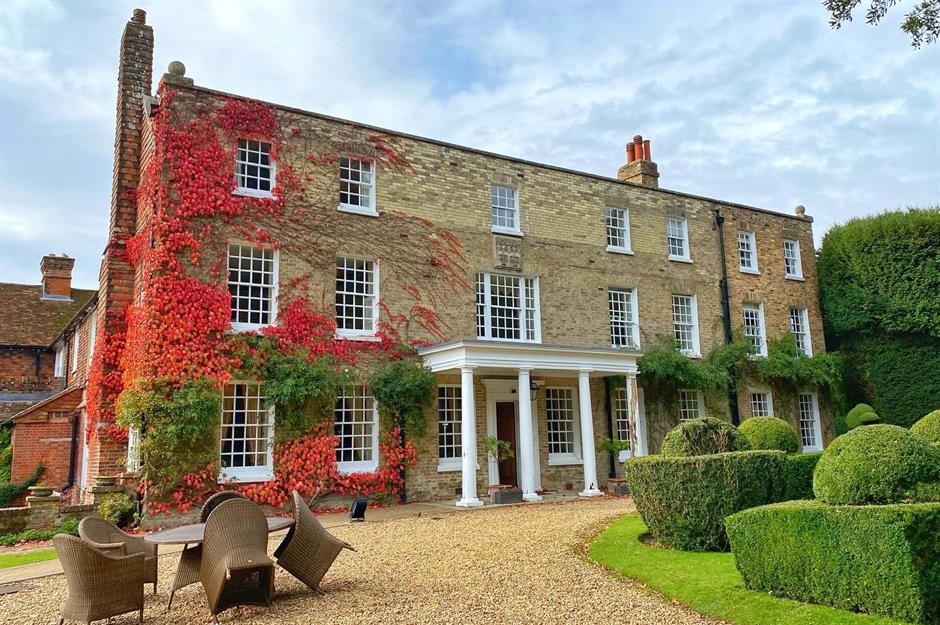
Tucked away on 5,000 acres of sleepy Suffolk countryside, Sibton Park lies within a private 8,000-acre estate of country houses, cottages and farmhouses called the Wilderness Reserve. The estate itself dates to the Norman period with the foundation of Sibton Abbey in 1150. Following the dissolution of the monasteries in England, the Abbey and estates were acquired by the Howard family, Dukes of Norfolk and eventually came under the ownership of Fleet Street heir Robert Sayer, who built the grand manor in 1827.
Sibton Park, Suffolk, England
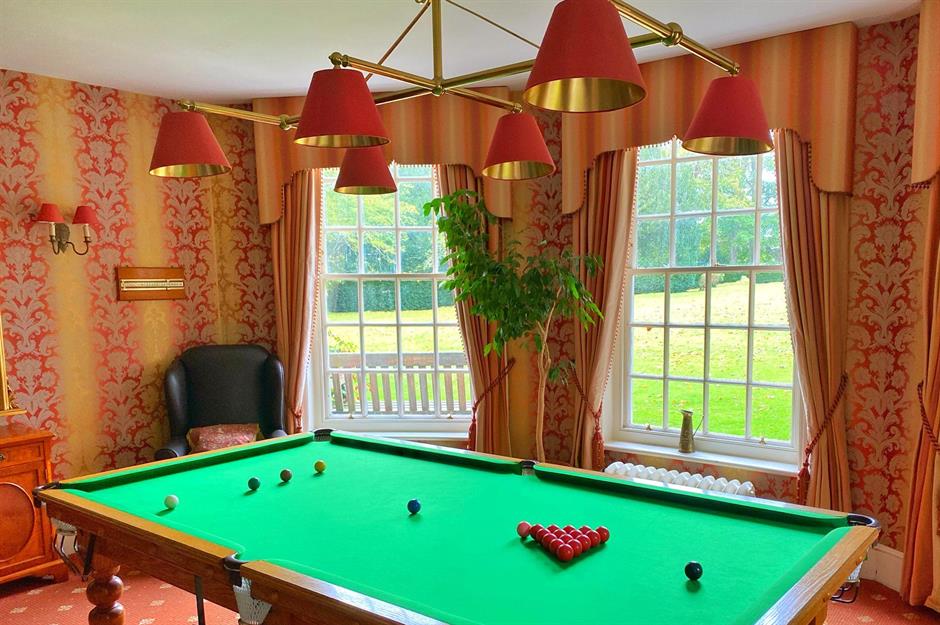
Designed by 19th-century architect Decimus Burton, the lavish Georgian manor has since been revived as a hotel. Outside, the giant Ionic columns create a dramatic portico entryway into the impressive building. Within the house are 13 guest bedrooms.
Highlights include the fine antique furniture, the listed Chinese wallpaper that adorns some of the walls, the sparkling chandeliers and a grand orangery. With its luxurious interior and over 300 acres of land, Sibton Park is undoubtedly the most impressive building of the estate.
Dollarbeg Castle, Clackmannanshire, Scotland
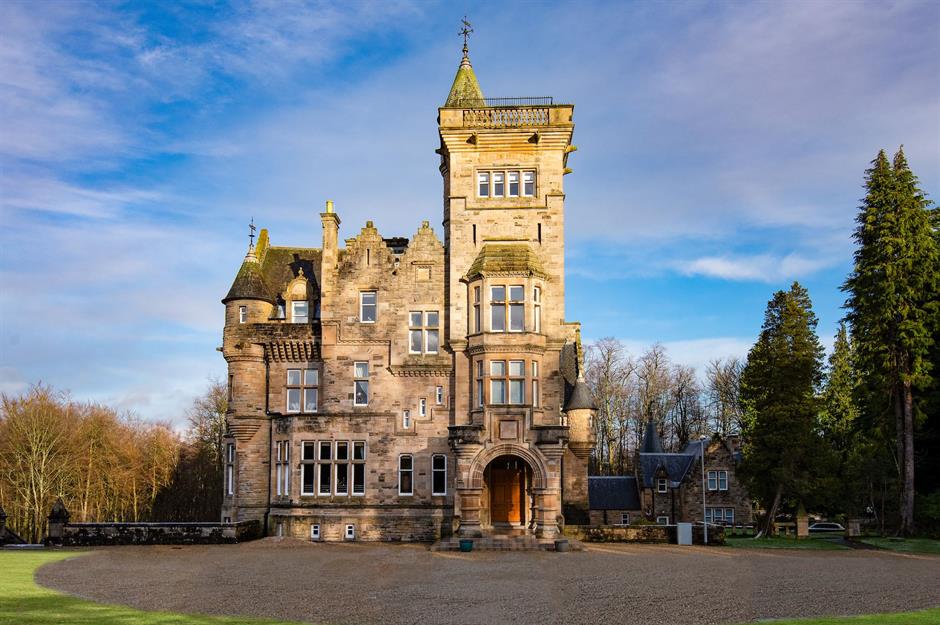
Overlooking the picturesque Ochil Hills in central Scotland, this grand structure is thought to be one of the last Gothic baronial-style buildings of its kind to be built. Dating to the 19th century, the magnificent Great Hall of Dollarbeg Castle was once used for dancing and socialising in the 1930s before it served as a base for RAF radar control during World War II. The hall has since been converted into a stylish holiday apartment for four people.
Dollarbeg Castle, Clackmannanshire, Scotland
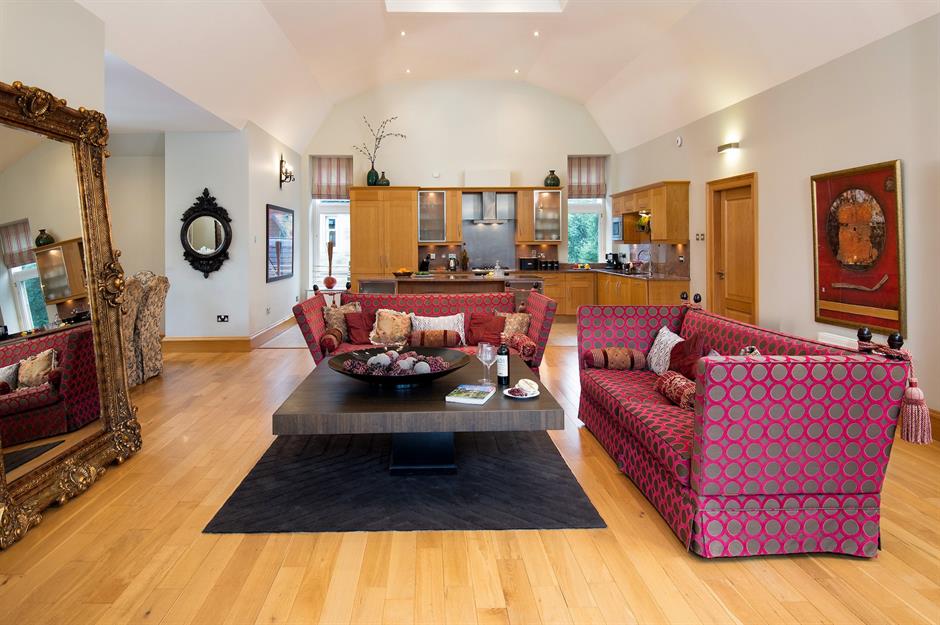
Situated on the first floor of the castle, the Great Hall features an open-plan layout for cooking, dining and lounging. There is a beautiful blend of modern and vintage-style features across the apartment including vaulted ceilings, embroidered sofas and gilded mirrors, while polished oak floors, modern kitchen appliances and ceiling spotlights add a contemporary feel. There are three bedrooms for up to six guests, while the apartment windows provide stunning views across the gardens and woodland.
Comments
Do you want to comment on this article? You need to be signed in for this feature